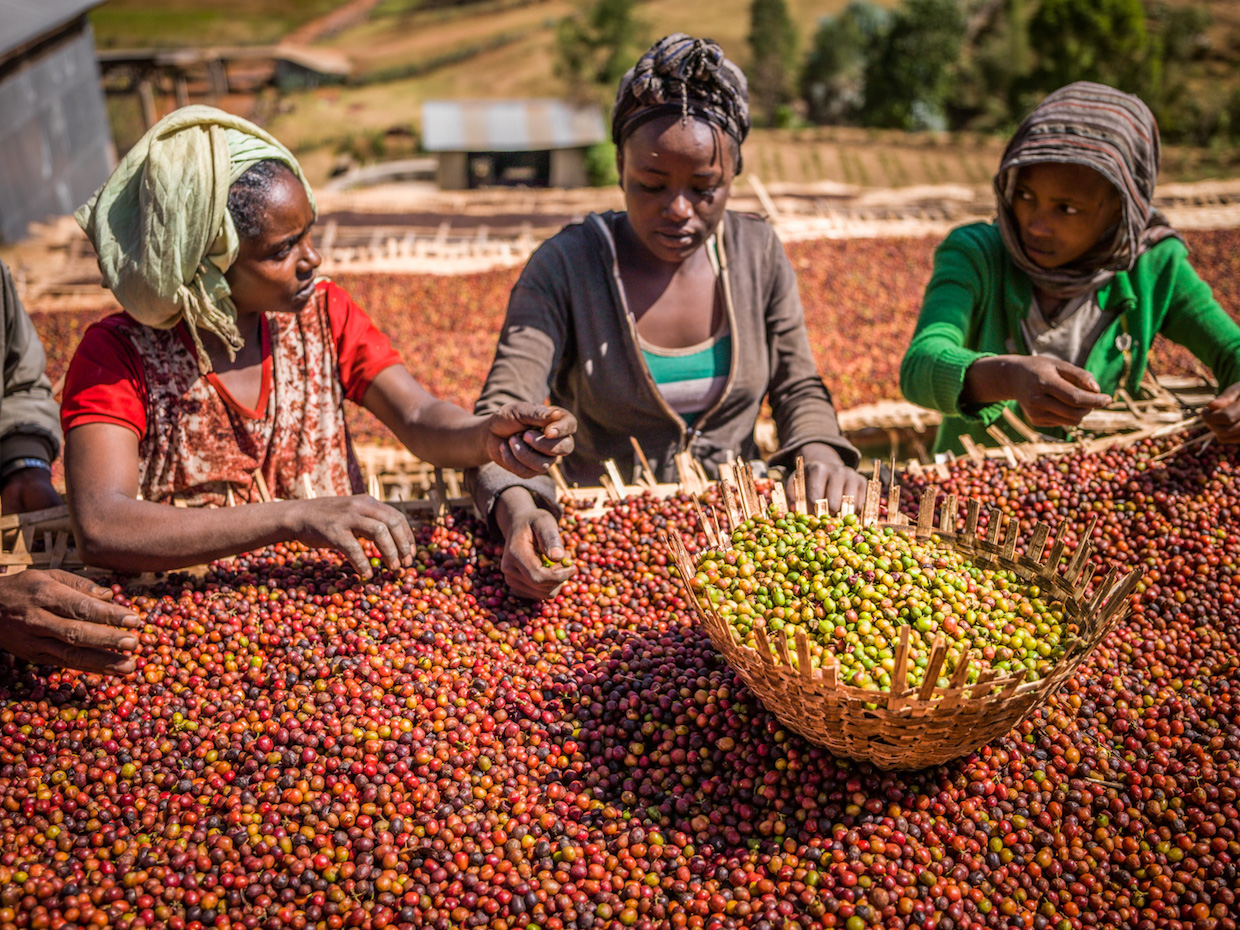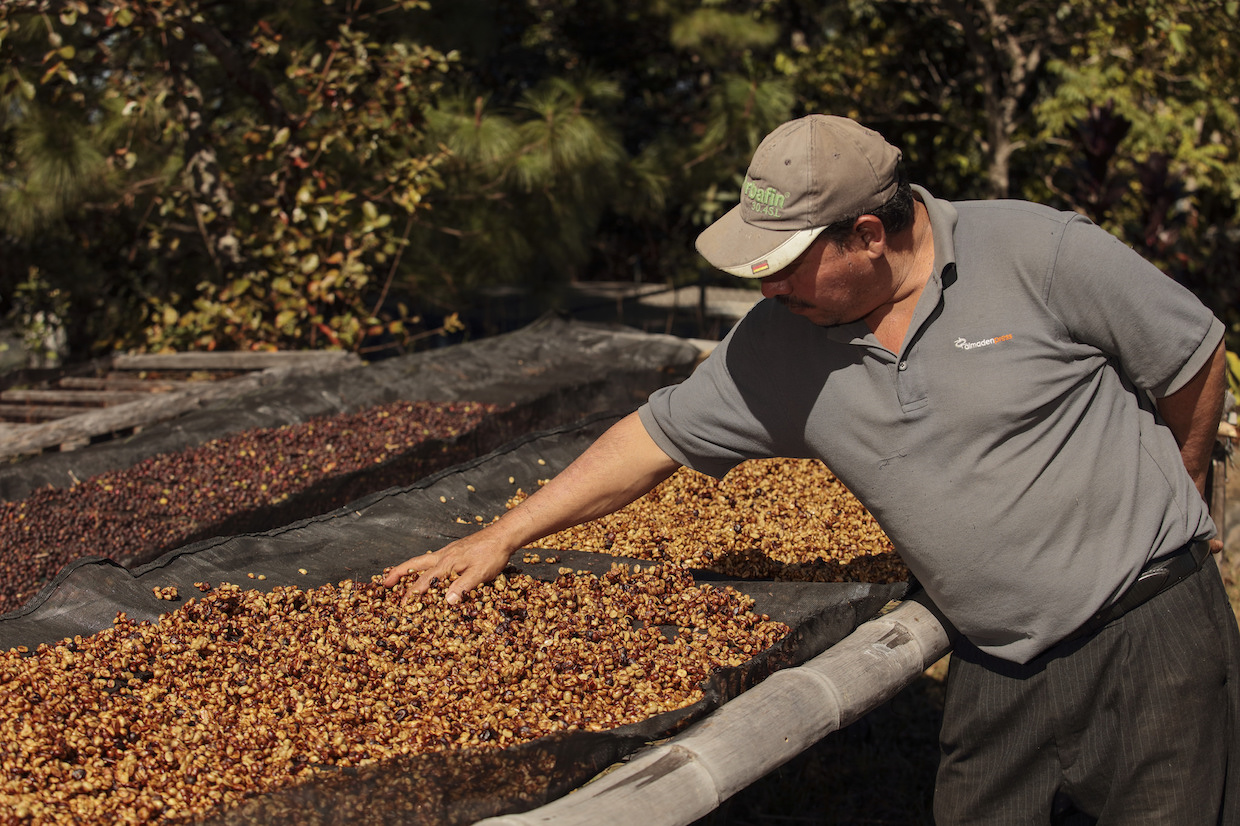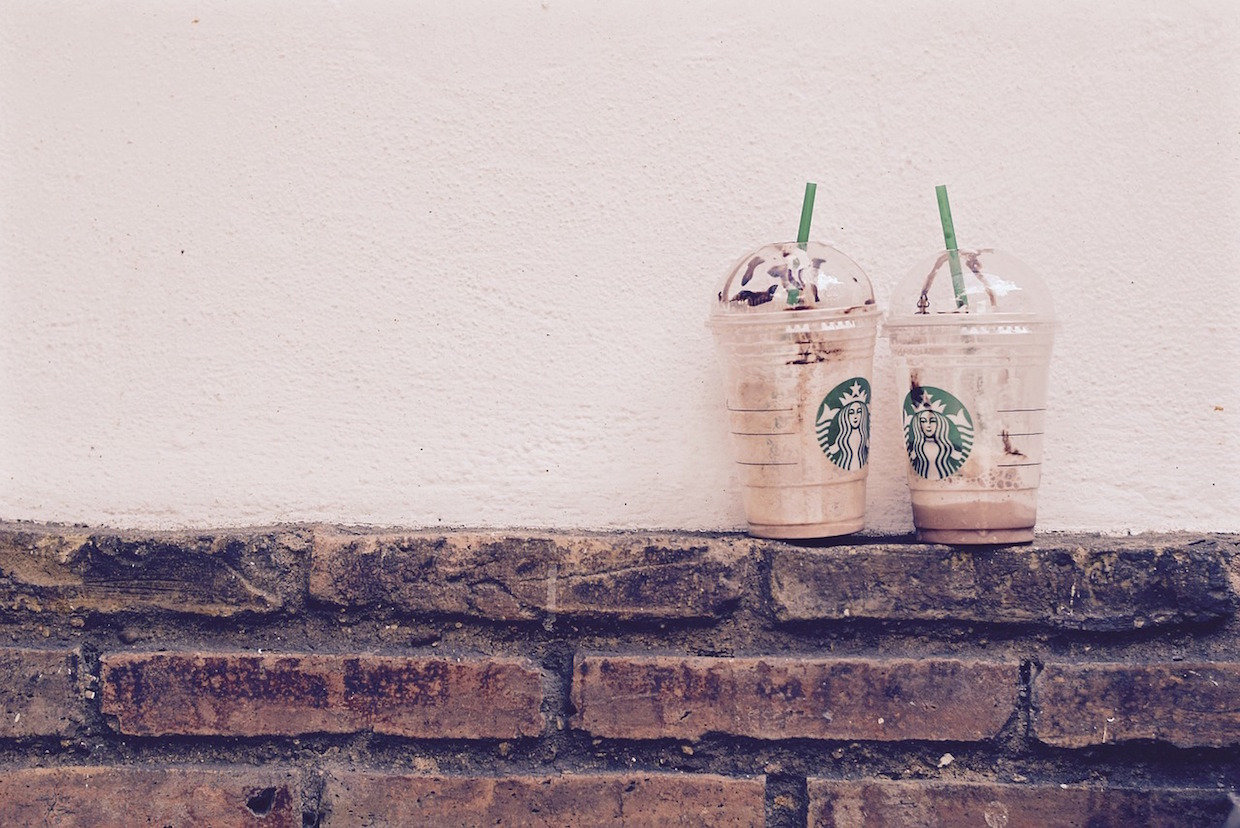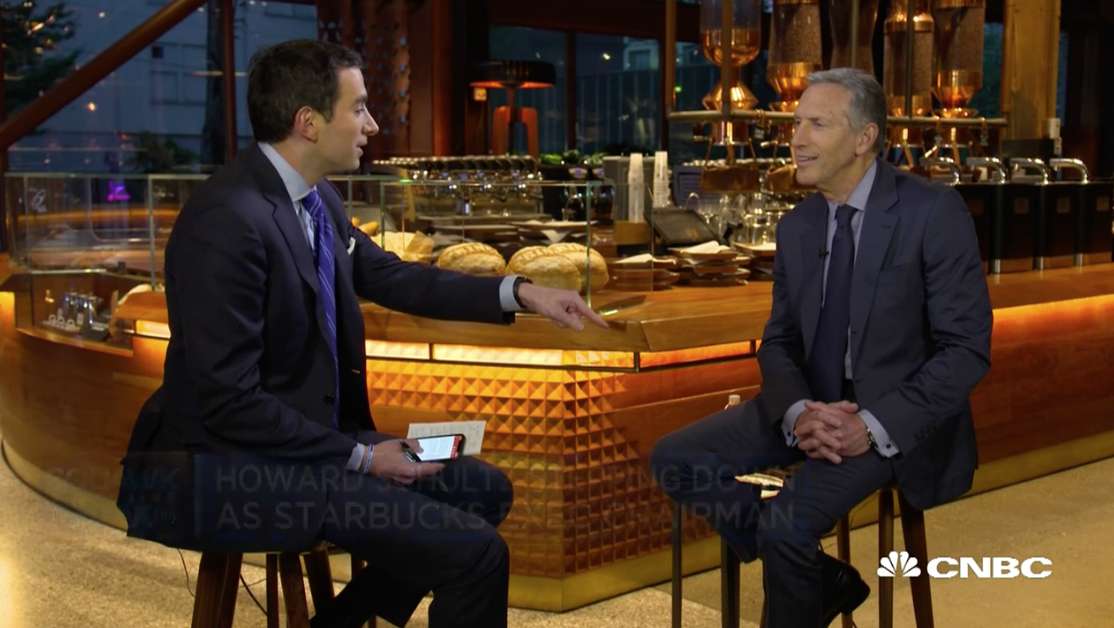Farmers in El Salvador are increasingly turning to specialty coffee, Reuters reported this week, despite the memory of the 2012 leaf rust outbreak and the persistent risk that the disease could come back around:
Last year, specialty coffee made up about 65 percent of its exports, a figure expected to rise to 80 percent by 2025, according to Salvadoran Coffee Council data.
The strategy comes with a shot of risk: The trees are highly susceptible to the very crop disease, roya, that cut El Salvador’s harvest by 60 percent four years ago. And the threat remains, with four new strains of roya just identified in neighboring country Honduras, a U.S. attache reported last month.

“Coffee sorting process, near Hawassa” by Niels Van Iperen. Licensed under Creative Commons Attribution-Share Alike 4.0 International.
Coffee producers in Ethiopia, meanwhile, are confronting the reality that there’s only so much land remaining on earth that’s ideal for growing the kind of high-quality Arabica coffee for which the country is known. Enca.com has more on what’s proving to be an uphill battle:
The country’s government is now encouraging farmers to grow coffee at higher elevations — up to 3,200 metres above sea level, about 1,000 metres above the norm.
That could help mitigate some of the climate change pressures Ethiopia faces, said Birhanu Tsegaye, who heads extension services for coffee, tea and spices for the Ethiopia Coffee and Tea Development Marketing Authority (ECTDMA), a government body tasked with overseeing the sector.
As temperatures rise, “even areas not (formerly) suitable for coffee growing have become suitable, presenting an opportunity for the country to cope with climate change,” he said.
Similarly, Starbucks is finding out that there’s only so much space on Earth’s consumer plane on which to serve and sell coffee or whatever else might be on the menu that day, like Serious Strabwerry Frappuccinnos or Chicken Chorizo & Tortilla Sous Vide Egg Bites. Analysts told the Wall Street Journal that at this point, the retailer risks cannibalizing its own customers:
Starbucks has opened more than 2,000 new cafes in the U.S. in the last three years, contributing to what some analysts say is an oversupply of coffee shops. With nearly 14,300 U.S. locations, there are now more Starbucks than there are McDonald’s in America.
One can plainly see why the company has shifted its sites so significantly to China. In a piece about millennials driving an uptick in coffee consumption there, CBS News reported that more than 3,000 illuminated green sirens are planned to be hung in the next five years, and for China, that figure represents only the tip of the potential growth iceberg for specialty coffee:
In Shanghai there are now more than 6,500 coffee shops and to say there’s one on every corner would be a gross understatement. On one street, [CBS News correspondent Ben] Tracy spotted three right next to each other.
Costa Coffee is opening hundreds of new stores here thanks to China’s millennials who are embracing coffeehouse culture.
Yet as the coffee giant digs in overseas, its former CEO has had much to say about the status of the homeland this week. As Howard Schultz announced he was stepping down as Starbucks Executive Chairman in an exclusive interview with CNBC, he also openly flirted with the notion of a 2020 presidential bid:
“There’s a lot of things I can do as a private citizen other than run for the presidency of the United States,” Schultz said Tuesday in an extensive interview on CNBC’s “Squawk Box.” “Let’s just see what happens.”
“I don’t know what that means right now,” he said. “But my concern for the country and the standing in the world, the lack of dignity, lack of respect coming from the administration. I think we can do much better.”
It’s true that on Schultz’s watch, Starbucks has played a leadership role both in the coffee and in corporate culture. In fact, its recent closure of thousands of stores for staff training on racial sensitivity seems to have set an example, as two-store micro-roaster Kaladi Coffee Roasters in Denver has ordered a staff-wide transgender sensitivity training after a worker was fired for leaving work early, and later claimed to have been experiencing harassment on the job. The Denver Post had more:
Going forward, [Co-owner of Kaladi Coffee Roasters Mark Overly] said the coffee shop plans to work with a LGBTQ organization for staff training on transgender sensitivity.
[Sable Schultz, transgender program manager at the GLBT Community Center of Colorado] said her organization offers training for groups who want to become better educated in transgender and LGBTQ issues. Some best practices for sensitivity training, Schultz said, include checking with employees on which names and pronouns they want to be called; avoiding inappropriate questions about medical histories; not referring to a transgender person by their former name if they’ve since changed it; and recognizing that the state of Colorado and city of Denver protect transgender people based on gender identity.
Kaladi Coffee Roasters also started a Facebook fundraiser for LGBTQ nonprofit One Colorado Education Fund.
Virgin Atlantic has announced a partnership with Jamaican coffee liqueur maker Tia Maria to offer coffee cocktails on transatlantic flights. Bar Magazine picked up the story:
The new partnership sees a classic Espresso Martini and a Tia & Tonic available to passengers in Upper Class and just a Tia & Tonic (pictured below) for anyone travelling premium economy.
In-flight guest bartenders will show off their expertise on some flights including Bea Bradsell, the daughter of the late Dick Bradsell who created the Espresso Martini while working in Soho in the 1980s.
The Armed Forces seem poised to get more efficiently jacked on whatever joe they’re supplied, thanks to a new algorithm developed by Department of Defense research scientists and reported by Science Daily that can mathematically predict when and how much caffeine someone should ingest in order to maximize alertness:
Compared to the original dosing strategies used in the studies, the U.S. Army’s algorithm identified strategies that enhanced neurobehavioral performance by up to 64 percent, or reduced caffeine consumption by up to 65 percent.
Howard Bryman
Howard Bryman is the associate editor of Daily Coffee News by Roast Magazine. He is based in Portland, Oregon.










Comment